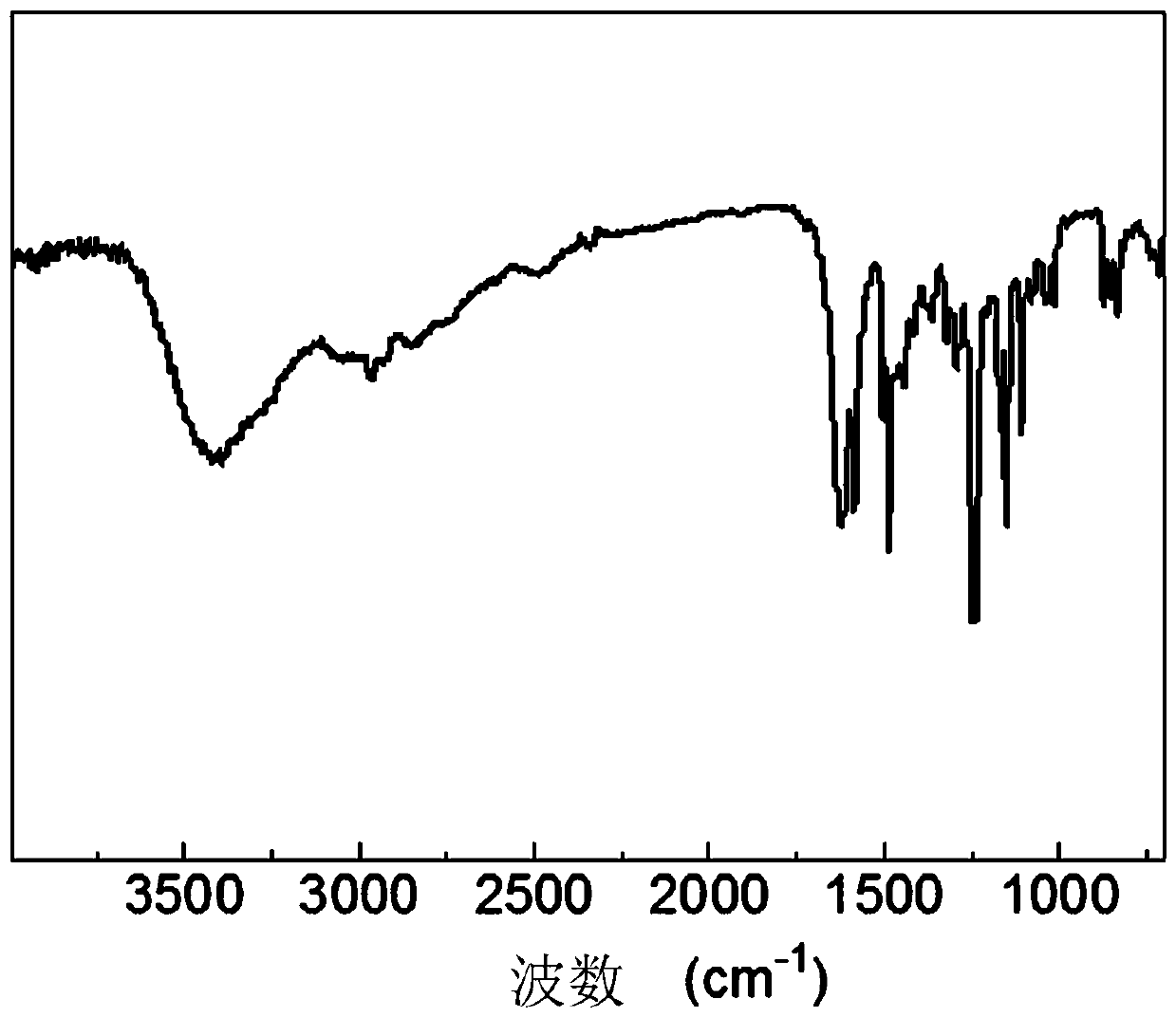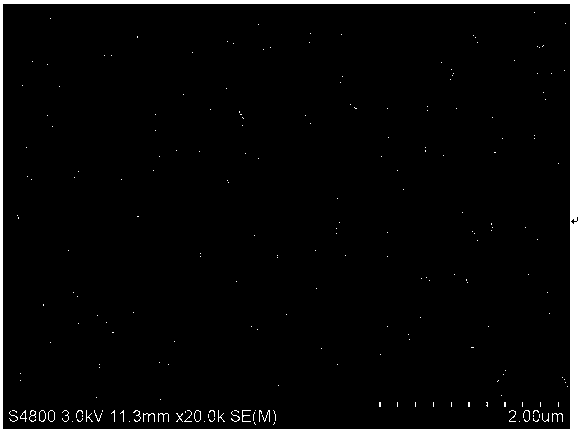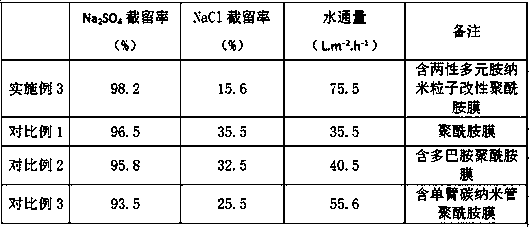Method for preparing in-situ polymerization amphoteric polyamine nanoparticle modified polyamide nanofiltration membrane
A nanoparticle and polyamine technology, which is applied in the field of membrane separation, can solve the problems of complex synthesis and modification methods of inorganic nanoparticles, limited scale and repeated stable preparation, etc.
- Summary
- Abstract
- Description
- Claims
- Application Information
AI Technical Summary
Problems solved by technology
Method used
Image
Examples
Embodiment 1
[0020] Dissolve 0.1g of N-aminoethylpiperazine propane-1-sulfonic acid inner salt and 0.01g of dopamine in 100g of aqueous solution, feed oxygen, and polymerize at 15°C for 8 hours to obtain an aqueous dispersion of amphoteric polyamine nanoparticles; then Adding 0.1g piperazine to 100g containing amphoteric polyamine nanoparticles mass percent concentration is 0.01wt% and containing sodium hydroxide mass percent concentration is 0.001wt% aqueous solution to be made into water phase solution; Immerse in the aqueous phase solution for 1 minute, take out and remove the excess aqueous phase solution on the surface; then immerse in a 0.1 wt% trimesoyl chloride-n-hexane solution, perform interfacial polymerization for 0.5 minutes, and cure at 45°C for 40 minutes. After being washed with deionized water, the polyamide nanofiltration membrane modified with amphoteric polyamine nanoparticles is obtained.
[0021] The polyamide nanofiltration membrane containing amphoteric polyamine na...
Embodiment 2
[0023] Dissolve 3g of N-aminoethylpiperazinepropane-1-sulfonic acid inner salt and 0.5g of dopamine in 100g of aqueous solution, feed oxygen, and polymerize at 25°C for 1 hour to obtain an aqueous dispersion of amphoteric polyamine nanoparticles; then 0.5g piperazine is added to 100g containing amphoteric polyamine nanoparticle mass percentage concentration and is 1wt% and the aqueous solution that contains sodium hydroxide mass percentage concentration is 0.01wt% is made into water phase solution; Immerse in the solution for 10 minutes, take out and remove the excess aqueous phase solution on the surface; then immerse in a 0.5 wt% trimesoyl chloride-n-hexane solution, perform interfacial polymerization for 5 minutes, and cure at 65°C for 10 minutes. After washing with ion water, the polyamide nanofiltration membrane modified with amphoteric polyamine nanoparticles is obtained.
[0024] The polyamide nanofiltration membrane containing amphoteric polyamine nanoparticles modifie...
Embodiment 3
[0026] Dissolve 2g of N-aminoethylpiperazinepropane-1-sulfonic acid inner salt and 0.2g of dopamine in 100g of aqueous solution, feed oxygen, and polymerize at 25°C for 6 hours to obtain an aqueous dispersion of amphoteric polyamine nanoparticles; then 0.3g piperazine is added to 100g and contains amphoteric polyamine nanoparticle mass percentage concentration and is 0.2wt% and contains the aqueous solution that sodium hydroxide mass percentage concentration is 0.005wt% to be made into water phase solution; Immerse in the phase solution for 2 minutes, take out and remove the excess water phase solution on the surface; then immerse in a 0.2 wt% trimesoyl chloride-n-hexane solution, perform interfacial polymerization for 2 minutes, and cure at 50°C for 20 minutes. After washing with deionized water, the polyamide nanofiltration membrane modified with amphoteric polyamine nanoparticles is obtained.
PUM
 Login to View More
Login to View More Abstract
Description
Claims
Application Information
 Login to View More
Login to View More - R&D
- Intellectual Property
- Life Sciences
- Materials
- Tech Scout
- Unparalleled Data Quality
- Higher Quality Content
- 60% Fewer Hallucinations
Browse by: Latest US Patents, China's latest patents, Technical Efficacy Thesaurus, Application Domain, Technology Topic, Popular Technical Reports.
© 2025 PatSnap. All rights reserved.Legal|Privacy policy|Modern Slavery Act Transparency Statement|Sitemap|About US| Contact US: help@patsnap.com



